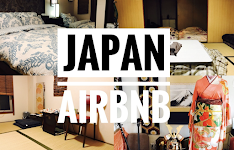Hi students!
First, let's cover some key vocabulary.
Instructions: MKD tutors, please cover the 6 vocabulary items below. Practice pronunciation, meaning (Japanese & English) and synonyms.
1. lodging: 宿泊 shukuhaku a place to sleep for the night, hotel, room
2. specifically: 具体的には gutaitekini wa exactly, especially, particularly
3. accommodation/s: 宿泊施設 shukuhaku shisetsu hotel, inn, room
4. book a room: 部屋を予約するheya wo yoyaku suru reserve a room, make a room reservation
5. inn: 宿 yado hotel, lodge, hostel
6. typically: 通常 tsūjō usually, commonly, often
Today we are are going to talk about lodging. We will practice making reservations, specifically, hotel reservations. But, before we start, let’s talk about some of the ways young people book a room for the night. Let’s compare what accommodation options young people in the Philippines have, and what young Japanese people have. What seems clear is that young travelers from all over the world have at least one thing in common, and that is their smartphones! Of course, booking a room anywhere in the world can be done on any smartphone, anytime!
In the US and Europe, young travelers (especially students) want to get the cheapest lodging possible. And so young Americans and Europeans typically stay at the following places 👇
Instructions: MKD tutors, please ask Rissho students to read each of the 6 following accommodation options. Briefly talk about each type of lodging. Do you have these lodging options in the Philippines?Japan? What do you think about them?
1. AirBnB: AirBnB is a global app for finding places to stay the night. Often, people can reserve AirBnB rooms much cheaper than they can at traditional hotels.
2. youth hostel: Hostelling International has a long history of providing low-cost accommodations around the world. There is a Hostelling International Japan organization, and there are youth hostels in the Philippines, too (click here). To book a room or a bed at a hostel, you may need to become a Hostelling International member. Some hostels ask you to bring your own bedsheets, too. Hostels are great places to meet new friends from all over the world.
3. guest house: In Japan, in recent years, guest houses have become very popular. They are all over Japan and all over the world. For example, there is one very nice (and cheap) guest house in Kamakura called Kamejikan. The Japanese owner--Sakurai San--was a global backpacker when he was young, and opened Kamejikan about 15 years ago. Sakurai San welcomes travelers from all over the world. When you visit Kamakura, please try to stay with Sakurai San.

👈
Sakurai San
4. backpacker lodge: There are many backpacker lodges all over the world and they are similar to youth hostels. Backpacker lodges are very popular with young travelers in Southeast Asia. They are much cheaper than hotels, and they are great places to meet other young travelers. Backpacker lodges also offer various tours and activities. They are cheap and fun.

5. YMCA: Everybody knows the famous "YMCA" song, and maybe Kurt can sing it for you 😏, but did you know it's fun to stay at a YMCA in Japan, Philippines, and all over the world...? Check out their Japan English website here or their Japanese website here.
6. couch surfing: Couch surfing is maybe not for everybody, but it is a very cheap lodging option. In fact, it's free! A couch is another word for sofa, and "surfing" means to do something for free. So basically, when you "couch surf," you sleep on the sofas of strangers for FREE! Of course, the strangers may become your friends. And of course, you can offer your couch to strangers, too. It sounds scary, but young people actually do it! There is a website here if you want to find out more about couch surfing. Or here is a fun video of a young couple couch surfing in Kumamoto here.

Ok... next, let's go on to today's lesson.
This is Lesson 18 - Making a Reservation at a Hotel 👉 here.
ENJOY!















 👈 Sakurai San
👈 Sakurai San


















